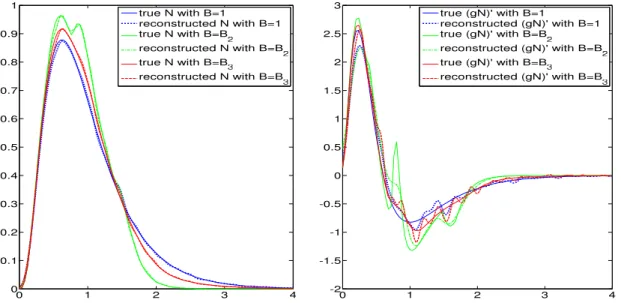Nonparametric estimation of the division rate of a size-structured population
Texte intégral
Figure




Documents relatifs
Résonateurs à base de cristaux photoniques (CP) Un cristal photonique 1D peut être représenter par des miroirs de Bragg di- électriques [ 50 ], dans lequel des couches d’indices
In 1800, Carl Friedrich Gauss, the German mathematician, produces formulas to calculate the date of Easter day.. Here is a simplified method, valid from year 1900 to year 2099 of
We consider a size-structured model for cell division and address the question of determining the division (birth) rate from the measured stable size distribution of the population..
The distribution forms of the samples representing the durations of failure or preventive interventions give useful information on the global behaviour of the equipment in relation
Keywords and phrases: Pointwise mean squared error, Wavelet methods, Density estimation, Nonparametric
We also prove a Second Main Theorem type result, orbifold hyperbolicity of a general orbifold with one component and high multiplicity, and Kobayashi hyperbolicity of the cyclic
Assuming that we observe all the divisions of cells occurring in continuous time on the interval [0, T ], with T > 0, we propose an adaptive kernel estimator ˆ h of h for which
In the framework of our approach, elicitating the prior comes down to determine the 2 J parameters of the Dirichlet distribution placed on the parameter of the saturated model,